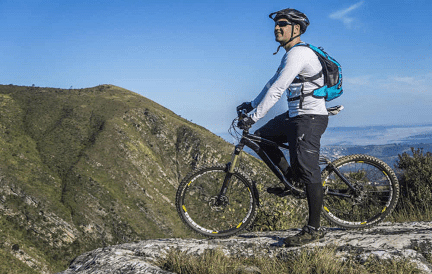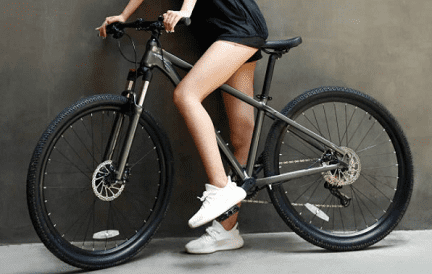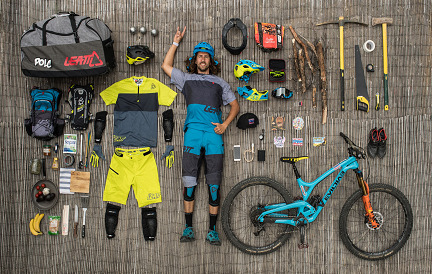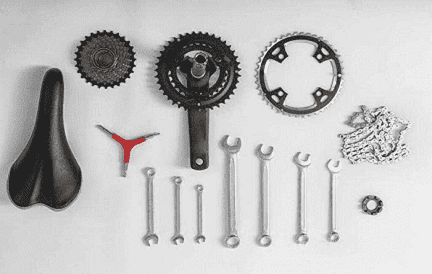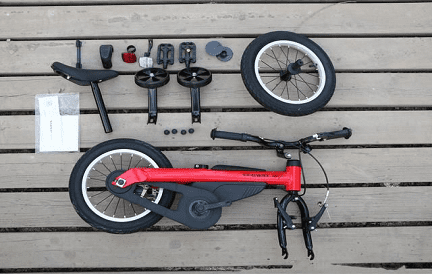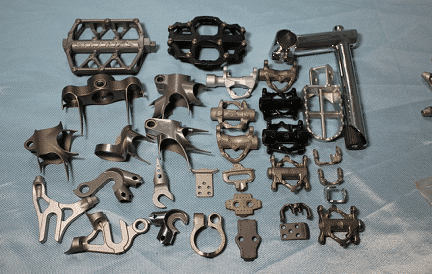Mountain bike Fenders are essential for riders in any condition; read on as we discuss all you should know about this vital accessory.
- Part 1: What Are Mountain Bike Fenders
- Part 2: How to Choose When You Shouldn’t Use Fenders
- Part 3: Why Do You Need Mountain Bike Fenders
- Part 4: Keep Your Bike And Its Rider Safe
- Part 5: The Different Types of Fenders
- Part 6: Things to Consider When Installing Them
- Part 7: Do Mountain Bike Fenders Help You Go Faster
- Part 8: Things to Think about When Buying Fenders
Part 1: What Are Mountain Bike Fenders
Fenders are a kind of device which you could easily attach to the MTB for your biking needs. The devices help protect from mud, dirt, and debris from kicking up onto the rider. There are different kinds of fenders, which you can use for your mountain bike, and each of them can help you for various purposes.
If you’ve ever shopped for bike fenders MTB on the web, you’ll know there are dozens of options to choose from. Even so, sometimes it is a real challenge to find a quality set of MTB bike fenders. For example, if you go to bicycle fender reviews or any forum, you’ll get many people saying, “no-one needs fenders – just wear pants!”
But the reality is different; fenders are useful to protect your legs from getting wet and make you look cool. They’re an essential multi-functional piece of equipment for most riders. So let’s dive into the world of MTB fenders.
Part 2: How to Choose When You Shouldn’t Use Fenders
We know that it’s a sign of pride for many mountain bikers to end a ride covered in dirt and mud. Just like many off-road jeep drivers you might see driving down the road. The battle scar of soil shows that you’ve gone on an adventure.
The purpose of a mountain bike’s design is to handle off-road activities. Obstacles like mud, rocks, and roots in your pathway are just another part of the entire experience. Some mountain bike lovers don’t want the fenders because they won’t get dirt on their faces or back. Perhaps by doing so the mountain biking experience gets less enjoyable or less memorable for them.
A large part of buying accessories for your mountain bike is knowing what you need and when you need it. If you want to immerse yourself in the weather, mud, and climate, then maybe you should consider not using fenders.
Also, If you desire to enjoy the environment but without suffering the inconveniences it causes, then mountain bike mud fenders would make sense for your ride. If you’re also someone who doesn’t want to worry about cleaning your bike as often, or other gear that gets debris all over it after a fenderless ride, then you should consider installing them.
Part 3: Why Do You Need Mountain Bike Fenders
Fenders can sometimes confuse the new cyclists entering the world of off-road bikes. It’s an area where one size does not fit all, and there are quite a few fender types. Even experienced mountain bikers often need to ask, “why do you need mountain bike fenders” when looking at their options.
There are so many varieties, and people usually feel like they don’t need them because of the simple fact that these bikes do not come with fenders out-of-the-box. The most crucial part of MTB bike fenders is that they are functional and safe tools.
There are a few factors that determine why you may need them. One of them is the weather. When you are riding off-road, you may not be able to find shelter, get off of the path, or stop riding safely. Bike fenders are a tool that allows you to ride through more volatile terrain and riding conditions. Because you don’t have to worry about getting mud all over you, this helps you stay on your bike and bring you to a position where you can be safer and get out of the weather.
Another factor is whether you are riding around other people or not. When you are riding in groups, mud, water, rocks, and other debris will be splashing all over the place.
The last thing you want is to find yourself in a position where you are spraying debris at a fellow rider because you didn’t install fenders. Or even worse, it is other people who are doing it and you can’t do anything about it!
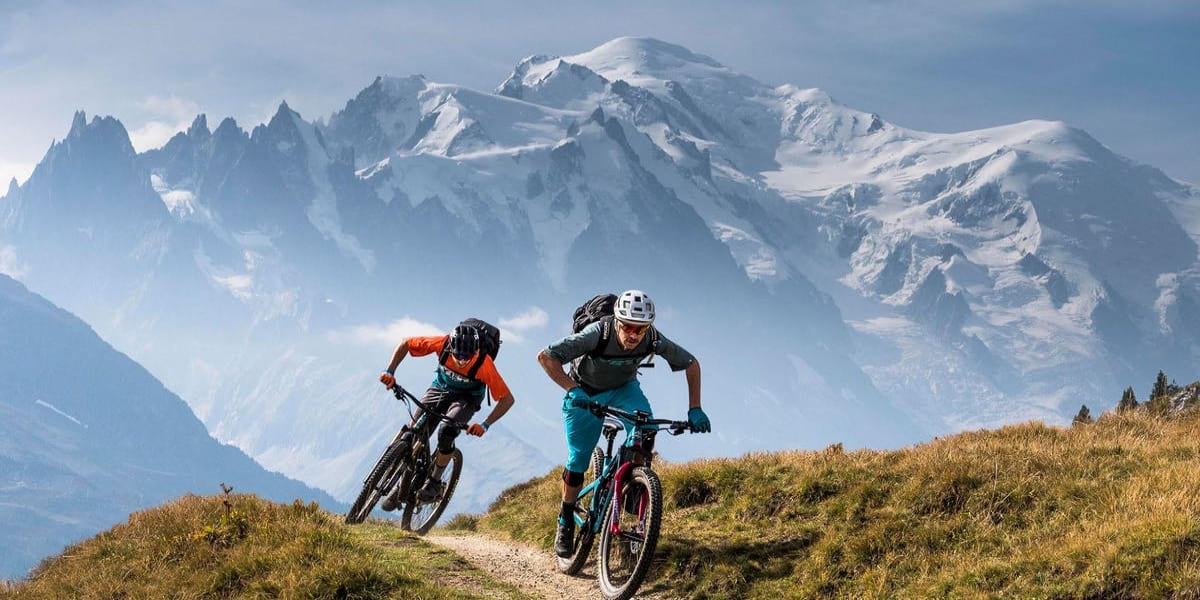
Part 4: Keep Your Bike And Its Rider Safe
Safety when riding is an essential part of the riding experience. Every year “ The overall injury risk rate of the mountain biking athletes is 0.6% per year and one injury per 1000 hours of biking. The main risk factors included slippery road surface, cyclist’s poor judgment of the situation, and excessive speed, representing personal factors that could be altered by preventive measures.
This study goes on to state that 14% of injuries were due to a collision involving the pedals or the handlebars. You may not feel as immersed with fenders as you would in your muddy ride, but they will help to keep you safe. The mud or water that sprays from your front tire can easily spray your face and your handlebars. How will you make the right decisions on your ride if you can’t see?
The handlebars in mountain biking are an extension of your mind and body. If these become slippery, it will severely restrict your performance and ability to avoid obstacles. Mud fenders for mountain bikes help you to prevent most of this debris from your bike and the people you’re riding with.
Keeping your bike safe is also extremely important. When debris or mud starts covering your bike, you’ll need to be more careful about cleaning and maintenance. If the wrong item gets into your chain or pedals, this could be harmful. Fenders will help protect your bike and keep you clean as you navigate the terrain. This means that things like wear and tear won’t harm your bike as much, and you can feel safe the next time you get on and go for a ride.
Part 5: The Different Types of Fenders
There are a variety of fenders available for your mountain bike. The most obvious variation is that the design of some is intended to protect the front, and the design of others is intended to protect the bike’s rear from spraying you and others. Some are smaller or larger. Others are optimal for protection against mud and debris.
You should also know that the materials that compose them are various. The best fender for you depends on your riding and the terrain where you do it.
Here are some things to keep in mind when shopping for mountain bike fenders.
- 1. As I mentioned previously, fenders come in front and rear versions: front fenders are typically smaller than rear ones and keep the spray off the rider’s legs, feet and back.
- 2. Rear fenders usually extend over the wheel to protect the rider and the bike from the spray. Fenders are made from different materials. Most fenders are made from plastic, thermoplastic resin, polypropylene, or metal. Plastic is lighter, but if it is poorly manufactured, it is more likely to crack, wear, or break, while metal is heavier but sturdier.
- 3. Fenders are available in different sizes. The size of the fender will depend on the size of your wheel. A large wheel may need a larger fender than a smaller wheel to optimize the functionality. Some manufacturers make universal fits that work with multiple wheel sizes, so check before buying. Sometimes the one-size-fits-all is not going to work as well as one made for the appropriately sized tire.
Part 6: Things to Consider When Installing Them
You can choose a few different ways to install your MTB bike fenders. One common way that folks install these is using zip ties. Some manufacturers will even ship their fenders with the recommended heavy-duty zip ties in the packaging.
The materials of these fenders are generally very lightweight, making them easy to install and uninstall. So you’ll want to make sure you consider whether you want to install your fenders more permanently. Some riders want the ability to remove the fenders quickly and easily.
Other fenders require an installation kit with tools. These are generally more robust fenders that will not rattle and allow you to have a smooth ride without stopping because one of your zip ties broke.
There are also clip-on designs. These designs, when appropriately installed, are sometimes the best of both worlds. The clips hold firmly to your bike and allow you the protection you need to have a great ride experience. They are also easy to remove quickly if you decide that you don’t want to use them during a particular ride.
You can attach the clip-on fender to your mountain bike’s seat post or front forks. Its high-performance plastic is lightweight and impact-resistant, which helps it stay in place. This fender is ideal for all types and sizes of mountain bikes. So if you’re looking for the most flexible option, you may want to consider this type of fender.
Part 7: Do Mountain Bike Fenders Help You Go Faster
Bicycle Quarterly performed a study using a wind tunnel to study the aerodynamics of actual bicycles. They tested the effects of your riding position, the clothes and gear you wear, equipment you carry with you, and fenders. In this study, they used a telescoping fender which allowed them to test different positions and configurations. Their results found that the portion of the front fender that is positioned in front of the fork actually reduces drag.
They found that the tire rotates twice as fast as the bike moves. The fender, in that case, shields the bike from the drag and allows the bike to move forward efficiently. In mountain bikes, fenders are generally not used for purposes of speed like a racing Tour de France bike would be. Usually, mudguards sit behind the fork, which wouldn’t increase or decrease the drag.
The study states that the shielding “works only if the fender extends beyond the top of the tire and drops down in front.”(https://www.renehersecycles.com/myth-3-fenders-slow-you-down/). However, the way that rear fenders are positioned on mountain bikes would likely create a small amount of drag and slow down the rider, but only slightly. This is because the rear fender is positioned vertically to reduce the spray and debris from reaching the rider’s backside. The wind will hit this vertically-oriented fender and slow the bike down, sort of like a sail catching the wind. This effect is very, very slight because the rear fender is designed to be rounded; this makes it less like a sail and doesn’t slow the rider down as much.
Part 8: Things to Think about When Buying Fenders
Now that you have become familiar with all of the applications offenders, you can weigh all of your options.
When considering your next purchase, you’ll want to know what kind of ride experience you want. You may be someone that prefers to be completely immersed in the environment. Perhaps you will come home covered in mud and wear your debris-filled gear with a sense of pride and accomplishment. In that case, you may not require a fender or mudguard during those rides. You will also need to know who your riding partners will be. If you’re riding with a group, consider the safety of your fellow riders. Don’t forget to double and triple-check the weather conditions you’ll be riding in. If you know you’re going to be caught in bad weather, you’ll want to be prepared. Perhaps you’ll keep a pair of those clip-on fenders; that way, you’ll be ready to install them and continue to ride without missing a step!
These will all be factors in helping you decide what kind of offenders you’re looking for. These factors combined will ensure that you have a memorable, safe, and enjoyable riding experience.


